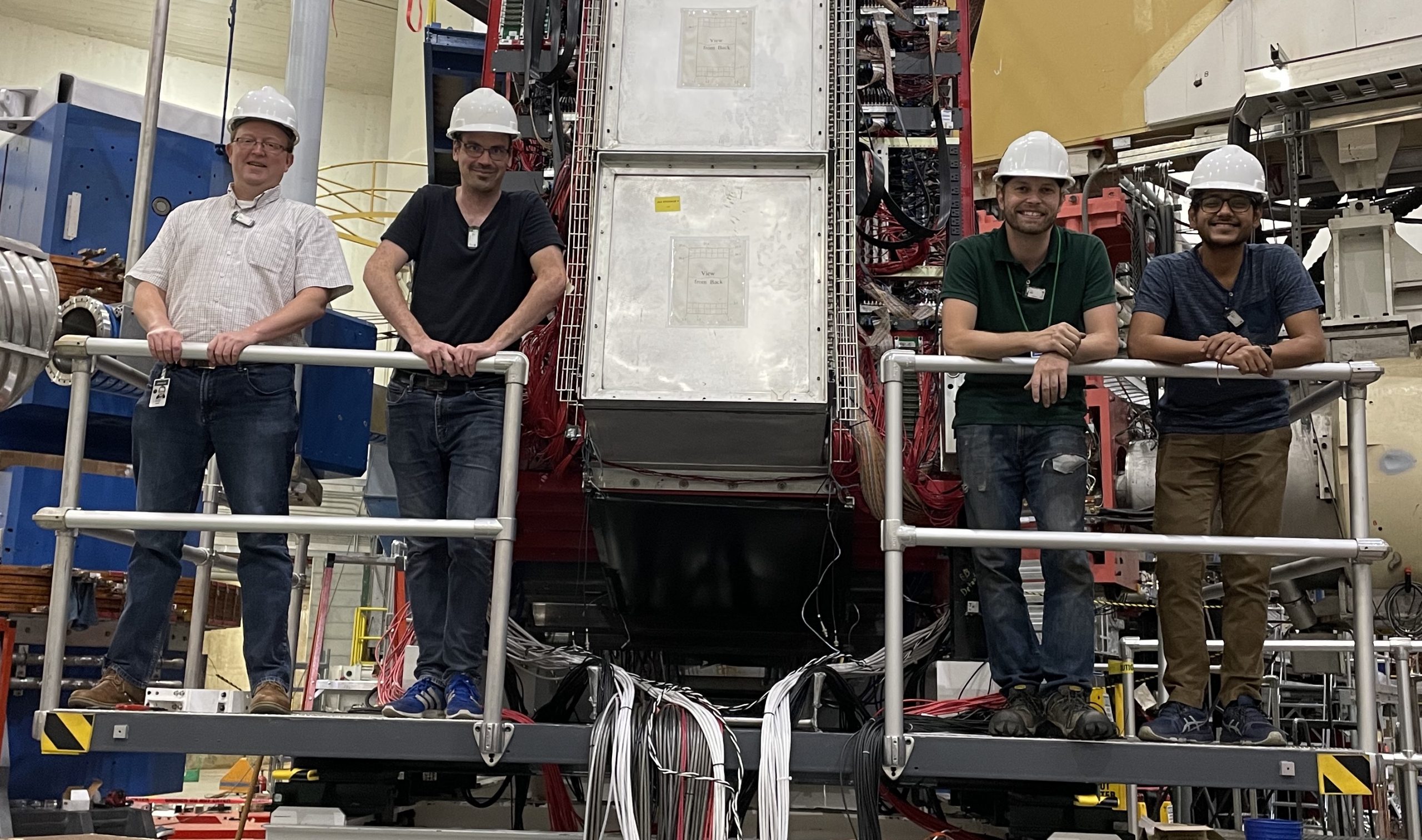Andrew J. R. Puckett, Associate Professor, Department of Physics

The photo above shows members of the group on the BigBite Spectrometer service platform in Hall A of Jefferson Lab during the SBS installation in July 2021. From left to right: Prof. Puckett, Dr. Eric Fuchey, Graduate Research Assistants Sebastian Seeds and Provakar Datta. Professor Puckett is an experimental nuclear/particle physicist studying the internal structure of strongly interacting matter in high-energy fixed-target electron-nucleon and electron-nucleus scattering experiments at Jefferson Lab (JLab). The recently completed 12 GeV upgrade of JLab's Continuous Electron Beam Accelerator Facility to a maximum beam energy of 11 GeV (12 GeV) for electron-beam (photon-beam) experiments, augmented by state-of-the-art target and detector systems, together with high-speed data acquisition and high-performance computing, has enabled a world-leading physics program leading to three-dimensional imaging of the internal quark structure of protons, neutrons and nuclei with unprecedented precision in both coordinate and momentum space. The ultimate goal of the experiments is to understand how strongly interacting matter is built from its elementary quark and gluon constituents in terms of Quantum Chromodynamics, the generally accepted theory of the strong interaction within the Standard Model. Click the image to see the list of publications and citations (according to Google Scholar).
Quick Links
Recent news/events
Provakar Datta Thesis Defense, September 18, 2024
Provakar Datta successfully defended his thesis titled “Precision Measurements of the Neutron Magnetic Form Factor to High Momentum Transfer using Durand’s Method” on September 18, 2024. From October to December, Provakar stayed on as a postdoc in the group, before starting a new postdoctoral position at Lawrence Berkeley National Lab.
[Read More]Sebastian Seeds Thesis Defense (July 19)
Sebastian successfully defended his thesis titled “The Two-Photon-Exchange Contribution to Electron-Neutron Elastic Scattering and Extraction of GMn at Q2 = 4.5 GeV2 in Hall A at Jefferson Lab” on Friday, July 19, 2024. After completing his Ph.D., Sebastian will start a new position as Staff Scientist 2 at Los Alamos National Laboratory, in the Intelligence […]
[Read More]JLab PAC52 approves new two-day experiment using SBS
Professor Puckett traveled to Jefferson Lab in July 2024 to defend an experiment proposal developed with Professors Jan Bernauer of Stony Brook University and Axel Schmidt of George Washington University at the 52nd meeting of Jefferson Lab’s Program Advisory Committee (PAC52). PAC52 approved the proposal with an “A-” scientific rating. The proposal was to add […]
[Read More]Contact Information
| Phone: | (860) 486-7137 (Office) |
|---|---|
| E-mail: | andrew.puckett@uconn.edu |
| Address: | 196 Auditorium Road, Unit 3046 Storrs, CT 06269-3046 |
| More: | https://physics.uconn.edu/person/andrew-puckett/ |